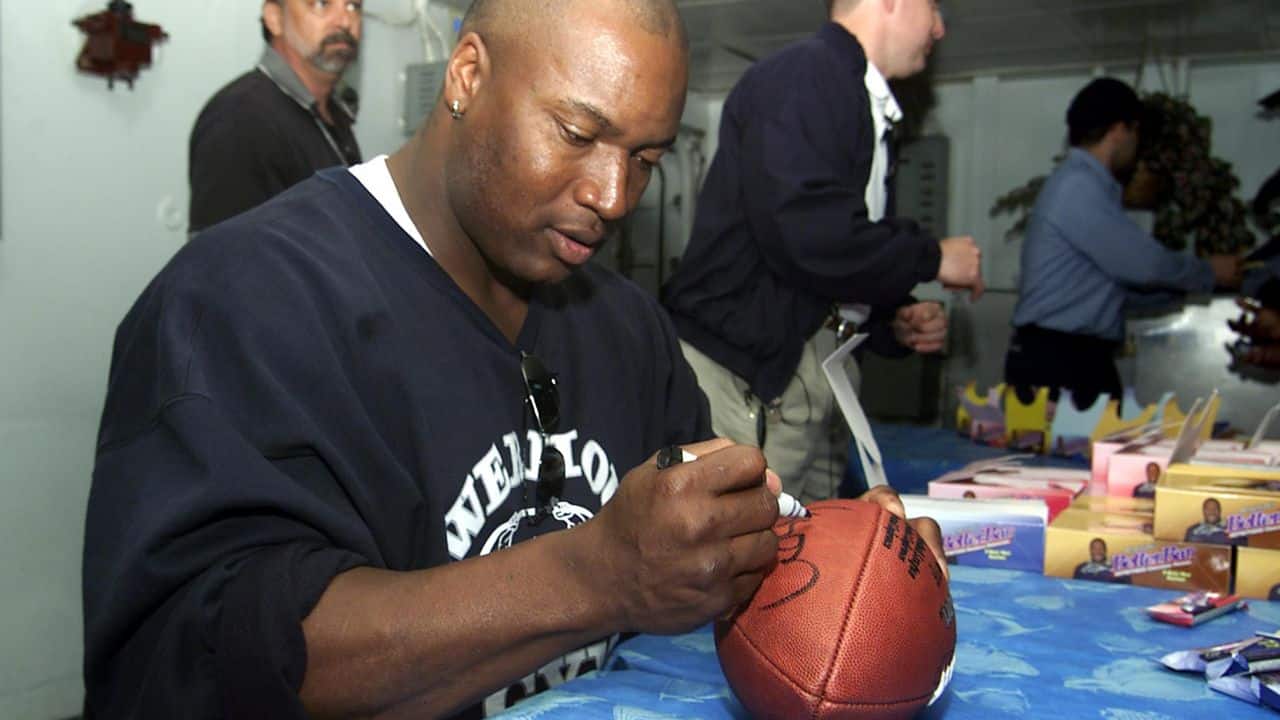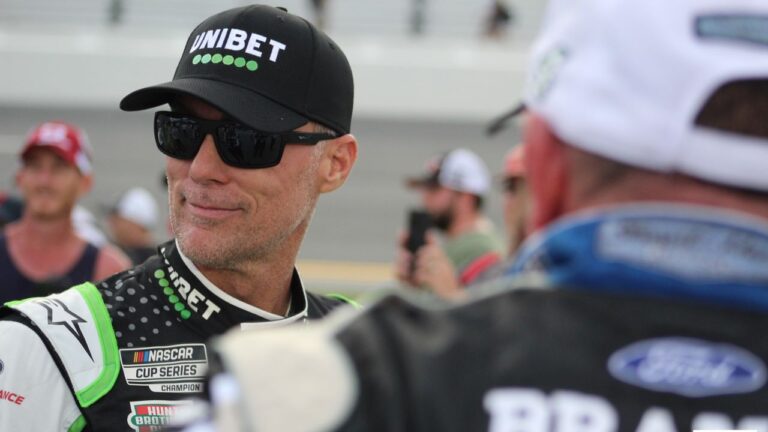Best All-Time Running Back at Each SEC School

Once upon a time, the SEC was so rich in history-making running backs that you knew them by their first names.
Herschel.
Bo.
Emmitt.
While college football has evolved away from the days of the 1970s and 1980s when running offenses ruled the day with the I-formation and various option offenses, such as the Wishbone and the Veer, the SEC has continued to produce great running backs into the new millennium.
The SEC has had six Heisman Trophy-winning running backs, not counting the seven Heisman running back winners who played for current SEC members when those schools had yet to join the SEC.
Two former SEC running backs — Florida’s Emmitt Smith and Georgia’s Terrell Davis — were named Super Bowl MVP.
And, of course, Smith remains the NFL’s all-time leading rusher with 18,355 yards.
Here is a list of the best running backs in history at each SEC school, including Oklahoma and Texas, which joined the league this season.
Alabama

Derrick Henry (2013-15); 6-2, 245
Honors: Won the 2015 Heisman Trophy, the Walter Camp Player of the Year, the Doak Walker and Maxwell Awards, unanimous first-team All-American, SEC Offensive Player of the Year, All-SEC 1st team, SEC championship game MVP
A throwback to the old-school SEC running backs of the 1970s and 1980s, Henry had the size and speed that resulted in the best single-season rushing numbers in league history when he led the Crimson Tide to the 2015 national championship in his only season as a starter. He holds SEC season rushing records for yards (2,219, the only 2,000-yard rusher in league history), attempts (395) and TDs (28). Finished his career rushing for 3,591 yards on 602 carries (5.9 yards per carry).
“I don’t know that I’ve coached many players that actually set a better example to affect other people than Derrick,” Alabama head coach Nick Saban said. “He doesn’t really do it for himself. He does it for them. His work ethic and the way he overcomes adversity really sets the best example every day not only on the field but how he lives his life.”
Arkansas

Darren McFadden (2005-07); 6-1, 222
Honors: Two-time Heisman Trophy runner-up (2006-2007), Walter Camp Award winner (2007), Doak Walker Award Winner (2006-2007), Jim Brown Trophy winner (2006-2007), SEC Offensive Player of the Year (2006-2007), two-time consensus 1st team All-American (2006-07), three-time All-SEC 1st team (2005-2006-2007).
The third-leading career rusher in SEC history in yards (4,590) and yards per game (120.8), McFadden had the versatility to line up as a Wildcat quarterback who could run and throw, making him probably one of the best players in college history to never win the Heisman. He was easily beaten by Ohio State QB Troy Smith in the 2006 Heisman, then lost by 254 votes to 2007 Heisman winner Florida QB Tim Tebow. McFadden completed 14 of 22 career passes for 205 yards and 7 TDs.
In his final regular season game as a collegiate in 2007, he ran for 202 yards and three TDs and threw for a TD in Arkansas’ triple-overtime 50-48 upset at No. 1 LSU.
“His ingredients are real simple,” then-Arkansas coach Houston Nutt said of McFadden, “It’s unselfishness, his character, his attitude, his competitiveness and his work ethic. He runs 4.3 [seconds] or less [in the 40-yard dash], and he can take it home each and every time.”
Auburn

Bo Jackson (1982-85); 6-1, 227
Honors: In 1985, he won the Heisman Trophy, Walter Camp Award (1985), SEC Player of the Year and was a unanimous 1st team All-America. He was an All-SEC 1st team honoree in 1982, 1983 and 1985.
Jackson is regarded as the greatest athlete in SEC history and he’s the only athlete in the history of pro sports to be named an All-Star in two different sports (Pro Bowl with NFL’s Oakland Raiders, All-Star game with MLB’s Kansas City Royals when he was the game’s MVP in 1989). He was strong (a bench press of at least 400 pounds), fast (he had a 4.12 40-yard dash time) and posessed natural athletic skills far beyond mere mortals.
“Every so often in practice he does things — balance and awareness things — that we’ve never seen before,” said then-Auburn offensive coordinator Jack Crowe during Jackson’s playing days.
At Auburn despite missing most of his junior year with an injury, Jackson still ranks fifth in SEC career rushing (4,303 yards) and yards per game (111.2) and is first in career yards per carry minimum of 300 rushes (6.62 on 650 career rushes).
Florida

Emmitt Smith (1987-89); 5-10, 201
Honors: SEC Player of the Year (1989), All-SEC 1stteam (1987-1988-1989), SEC Freshman of the Year (1987).
Smith, who was the national high school Player of the Year for Pensacola’s Escambia High where he had 109 career TDs, immediately lived up to his hype and maintained it throughout his three-year career.
In his first start as a true freshman, he ran for school records of 224 yards on 39 carries in a win over Alabama, and he never looked back,
He wasn’t the fastest back, but his vision, power and balance enabled to him to set 58 school records while rushing for 3,928 yards (currently 11th. in SEC history) and 36 touchdowns. Smith finished ninth in the Heisman voting as a freshman and seventh as a junior. His 96-yard scoring run vs. Mississippi State remains a Florida record and is tied for sixth longest in SEC history.
Georgia

Herschel Walker (1980-82); 6-1, 225
Honors: Heisman Trophy winner (1982), Heisman runner-up (1981), Heisman third place (1980), Maxwell Trophy (1982), Walter Camp Award (1982), 3-time unanimous 1st team All-American, 3-time SEC Player of the Year, 3-time All-SEC 1st team
Walker is considered the greatest football player in the SEC. He was a Brahma bull runner, a human battering ram who established 11 NCAA, 16 SEC records and 41 Georgia records in his three years in Athens. He still holds seven SEC records, including career marks for rushing yardage (5,259, an NCAA record for most yards in three seasons), rushing yards per game (159.4) and rushes per game (30.1).
“Herschel was never a fancy runner with a unique style,” late Georgia head coach Vince Dooley once said. “He had speed and power. He could stop and start. He was strength personified. He was like a heavyweight boxer who kept coming at you. When you get into the 13th, 14th and 15th rounds, you separate champions from the rest. That was Herschel. He had three basic plays — Herschel right, Herschel left and Herschel up the middle.”
Kentucky

Sonny Collins (1972-75); 6-1, 196
Honors: SEC Player of the Year (1973)
Every football power of the day – Southern Cal, Ohio State, Alabama – wanted Madisonville (Ky.) High running back Sonny Collins in his senior season of 1971. But … “When Kentucky came knocking on my door, I really didn’t think twice about it,” Collins said.
Kentucky had one SEC football title (1950) to its credit. The year after he graduated from UK and moved on to the NFL, it shared in its second league championship in 1976 because Collins had got the Wildcats to that point closer and closer throughout his career.
He rushed for a school career record 3,835 yards, which now ranks 14th all-time in SEC history. He had 18 100-yard rushing games and scored 26 career touchdowns. “I really wasn’t a talented athlete, but I did work extremely hard offseason and that was the key,” Collins said.
LSU

Kevin Faulk (1995-98); 5-10, 180
Honors: All-SEC 1st team (1996-1997-1998), 1st team All-American (1996), SEC Offensive Freshman of the Year (1995)
The first thing Gerry DiNardo did in December 1994 after being introduced as LSU’s head coach was to drive 50 miles west to Carencro, La., to put the full-court recruiting press on Carencro High’s Kevin Faulk. Faulk, as a QB, rushed for 4,877 yards and 62 TDs in his high school career. DiNardo projected him as a running back, which was a great move.
Faulk led LSU in rushing all four of his collegiate seasons, finished with a school-record 4,557 rushing yards and ran for a Tigers’ record 46 TDs. Both numbers remain the fourth-best in SEC history. “Kevin was very smart on the field,” DiNardo said. “He knew every position. He understood the game conceptually, not just his position. He was mature beyond his academically. He took care of business.”
Faulk later won four Super Bowl rings with the New England Patriots, which remains the most by any former LSU player.
Ole Miss

Deuce McAllister (1997-2000); 6-1, 232
Honors: All-SEC 1st team (1999, 2000)
McAllister is the only player in Rebels’ history to accumulate three seasons with at least 1,000 all-purpose yards. He finished his college career with school records for carries (616), yards (3,060), rushing touchdowns (36), total touchdowns (41), points (246) and 100-yard games (13).
Mississippi State

Anthony Dixon (2006-09); 6-1, 233
Honors: All-SEC 1st team 2009
Anthony Dixon was an absolute grinder, a between-the-tackles, burrowing, ditch-digging running back who rarely had a running attempt that didn’t have an almost immediate collision. Part of it was his running style and part of it was he didn’t have the offensive line. It didn’t matter to Davis, who became the seventh player in SEC history to lead his team in rushing four straight seasons.
He ranks 10th in the SEC in career rushing yards (3,994), third in career carries (910) and tied for 10th in rushing TDs (42). Dixon set MSU true freshman records in 2006 for rushing attempts, yards gained rushing, and touchdowns rushing. As a sophomore in 2007, he became the first Bulldog sophomore ever to surpass 1,000 yards rushing in a single season. As a junior, he averaged a career-best 4.4 yards per carry. As a senior, he set school single-season records for yardage (1,383) and yards per game (126.5).
Missouri

James Wilder (1978-80); 6-3, 225
Honors: Second-team All-Big Eight (1978 and 1979)
Born on a farm in Sikeston, Mo., Wilder, nicknamed “The Sikeston Train,” led Sikeston High School while setting school records for career (2,277 and single-season (1,382) rushing yards. After playing a year at Northeastern Oklahoma A&M College, he transferred to Missouri where he helped the Tigers to three straight bowl games.
Wilder played in 34 regular-season games for Mizzou, rushing for 2,357 yards and 22 TDs on 487 carries and catching 59 passes for 412 yards and two touchdowns. In 1978, he rushed 160 times for 873 yards and 11 touchdowns. He was named Liberty Bowl MVP in Missouri’s 20-15 upset of LSU when Mizzou ran for 200 yards on 50 carries.
Oklahoma

Billy Sims (1975-79); 6-0, 212
Honors: Heisman Trophy winner (1978), AP and UPI National Player of the Year (1978), consensus 1st team All-American (1978, 1979), 1st team All-Big Eight (1978, 1979)
Sims was a high school legend at Hooks (Texas) High, rushing for 7.738 yards, including 38 straight 100-yard rushing games. Oklahoma’s Barry Switzer was one of the first head coaches to recruit Sims. But even after he signed Sims, it wasn’t until after three injured-plagued collegiate seasons that Sims fully flashed his brilliance.
As a redshirt junior in 1978, he set a Big Eight single-season rushing record, leading the nation with 1,762 yards (more than 7 yards per carry) and scored 20 TDs. He also had a school-record four 200-yard-plus rushing games, which may have swayed Heisman voters to award him the trophy over Penn State QB Chuck Fusina.
In 1979 as a fifth-year senior, he was a co-favorite to win the Heisman along with USC’s Charles White. Sims finished the season with 1,506 yards, including 529 in the last two regular-season games after the majority of Heisman votes had been cast. He finished second to White.
South Carolina

George Rogers (1977-80); 6-2, 228
Honors: Heisman Trophy winner (1980), 1st team All-American (1979, 1980), 1979 Hall of Fame Bowl MVP
Rogers broke into the starting lineup midway through his true freshman season and became an indispensable weapon. He split time with fellow sophomore Johnnie Wright in 1978 but still ran for 1,006 yards and six TDs.
He moved in as the full-time starter when he was a junior, rushing for 1,548 yards and eight TDs. As a senior, getting help from a more talented team, Rogers ran for a nation-leading 1,781 yards and 14 TDs. The Gamecocks went 8-3 and he won the Heisman.
Rogers had 27 games in which he rushed for 100 or more yards. He set school records for career rushing (4958 yards), season rushing (1,781), and rushing average per game (112.7). In four years, he scored 202 points. He returned 12 kickoffs for an average of 28.3 yards. In his last two years, South Carolina had a 16-6 record and was in the 1979 Hall of Fame Bowl and 1980 Gator Bowl. Rogers was named Most Valuable Player in the 1979 Hall of Fame Bowl.
Tennessee

Johnny Majors (1954-56); 5-11, 168
Honors: SEC Player of the Year (1955, 1956), All-SEC 1st team (1955-56), 1st team All-American (1956), Heisman Trophy runner-up (1956).
There have been other Tennessee running backs with more career yardage than Majors. But none of them were twice named the SEC Player of the Year who also finished second in the 1956 Heisman Trophy voting behind Notre Dame’s Paul Hornung.
Majors finished his Tennessee playing career with 1,622 rushing yards and 15 touchdowns on 387 carries while also completing 54.1 percent of his passes (80 for 148) for 1,135 yards and 11 scores. He rushed for 549 yards and seven touchdowns on 108 carries in 1956.
Tennessee was 20-10-1 during his time as a Vol. Majors returned 36 punts for a 12.2-yard average and one touchdown in his career along with 15 kickoff returns for a 22.9-yard average.
Majors also intercepted two passes at Tennessee and punted 83 times for a 39.1-yard average.
When his Tennessee playing career ended, he ranked in the SEC’s all-time top 10 in total offense (2,757) and rushing (1,622) and was the league’s single-season record holder for completion percentage (61.0 percent in 1956).
Texas

Earl Campbell (1974-77); 5-11, 220
Honors: Heisman Trophy winner, Southwest Conference MVP, Sporting News and UPI Player of the Year, unanimous 1st team All-American (all in 1977), three-time All-SWC 1st team (1974, 1975, 1977).
The Tyler, Texas, native, nicknamed “The Tyler Rose,” was the national high school Player of the Year and transitioned flawlessly into the college game. As a UT freshman in 1974, he ran for 928 and six TDs in 11 games. Then as a sophomore in 1975, he was named 1st team All-America after he led the Southwest Conference with 1,118 rushing yards and 13 TDs. He missed four games as a junior in 1976, running for 653 yards and three touchdowns in seven games.
Campbell had a huge senior season in 1977, when he won the Heisman. He led the nation in rushing with 1,744 yards and 19 TDs as Texas went 11-1, won the Southwest Conference title, and finished No. 4 nationally after losing in the Cotton Bowl to Notre Dame. He rushed for 4,443 career yards, which was the best in NCAA history at the time. He had 21 100-yard rushing games (10 as a senior) and three 200-yard games.
Texas A&M

John David Crow (1955-57); 6-2, 210
Honors: Won Heisman Trophy, Walter Camp Foundation Player of Year, UPI Back of Year, unanimous 1st team All-American all in 1957
When John David Crow lost 35 yards the first two times he touched the ball in his Texas A&M career, then-Aggies’ head coach Paul “Bear” Bryant pointedly told Crow, “John, our goal is that way.” By the time Crow concluded his college career in 1957, Bryant said, “If John David Crow doesn’t win the Heisman Trophy, they ought to stop giving it.”
That season, Crow became the only Heisman winner of Bryant’s illustrious coaching career when he ran for 562 yards and six TDs, caught two passes, threw five TDs and intercepted five passes. He averaged 5.0 yards per carry in his three-year career.
Vanderbilt

Ralph Webb (2013-17); 5-10, 202
Honors: All-SEC 2nd team (2016), All-SEC 3rd team (2015)
Webb graduated with virtually every Vandy career rushing mark, including 4,173 rushing yards (No. 6 all-time in the SEC), 931 carries (2nd all-time) in the SEC, 32 rushing touchdowns, 35 total touchdowns and 16 games of at least 100 rushing yards. single-season rushing yards (1,283), rushing yards by a junior (1,283), rushing yards by a sophomore (1,152) and rushing yards by a freshman (907).
He started 49 straight games, an almost unheard number for an SEC running back.





